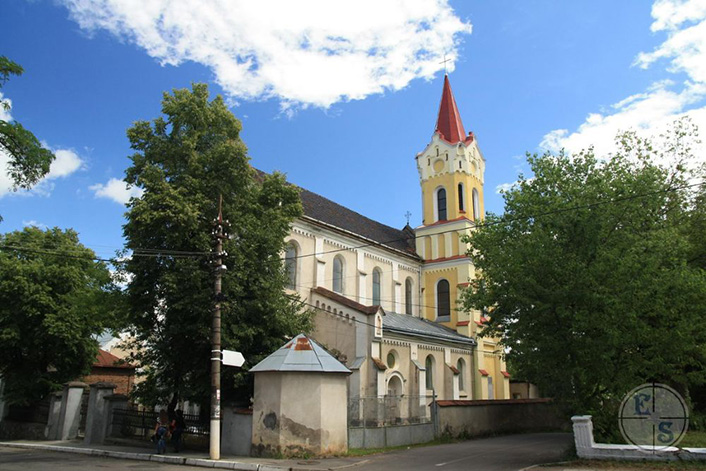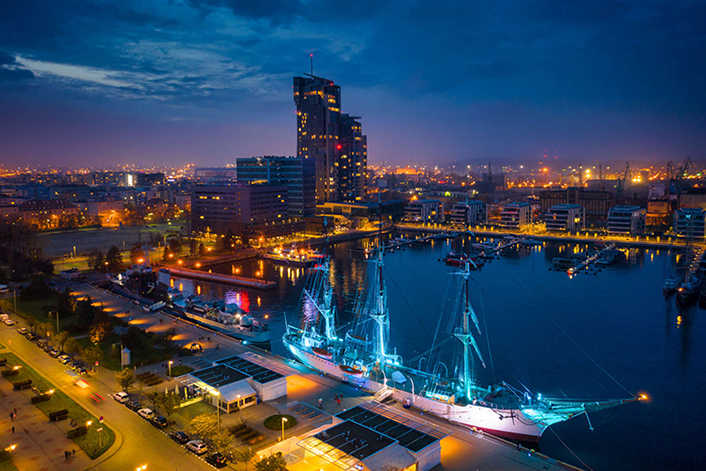Bus from STARYI SAMBIR to GDYNIA - find a connection and buy a ticket
STARYI SAMBIR

Stary Sambor (ukr. Старий Самбір), a city in western Ukraine, Lviv region, located on the Dniester River. It is a small but historically important city with a long tradition and many interesting aspects of its history.
Thanks to its location and agricultural traditions, Stary Sambor has strong ties to agriculture, especially grain, vegetable and fruit growing. Crafts and small-scale industry are also developing in the region. The city is also an important commercial center that serves nearby villages and settlements.
Old Sambor, despite being a small town, has several important sites of historical and cultural significance:
St. Nicholas Church - This is one of the main religious monuments in the city, which is an important point of interest for the local community. The church has a rich history and religious traditions.
Monuments and memorials - Old Sambor is also home to monuments commemorating events related to World War II and other important moments in the history of the city and the region.
Folk culture - Numerous elements of Ukrainian folk traditions, including music, dances, and handicrafts, have been preserved in and around the city.
Stary Sambor (ukr. Старий Самбір), a city in western Ukraine, Lviv region, located on the Dniester River. It is a small but historically important city with a long tradition and many interesting aspects of its history.
Thanks to its location and agricultural traditions, Stary Sambor has strong ties to agriculture, especially grain, vegetable and fruit growing. Crafts and small-scale industry are also developing in the region. The city is also an important commercial center that serves nearby villages and settlements.
Old Sambor, despite being a small town, has several important sites of historical and cultural significance:
St. Nicholas Church - This is one of the main religious monuments in the city, which is an important point of interest for the local community. The church has a rich history and religious traditions.
Monuments and memorials - Old Sambor is also home to monuments commemorating events related to World War II and other important moments in the history of the city and the region.
Folk culture - Numerous elements of Ukrainian folk traditions, including music, dances, and handicrafts, have been preserved in and around the city.
GDYNIA

Gdynia by bus, train and other ways to get to the city
One of the tourist advantages of Gdynia is that the city can be reached in many ways. Nationwide trains and local railroads (Rapid Urban Rail) reach Gdynia. Within the city and neighboring municipalities, transportation is provided by ZKM Gdynia buses and trolleybuses. A dense network of bus stops makes moving between city attractions quick and convenient. Gdynia's main road artery is the DK6, which connects to the DK20, DK7 and the A1 highway. Thanks to these transport routes, access to the Tricity stands at a European level. Since we mentioned Europe, it is worth mentioning that long-distance coaches also depart from Gdynia Sindbad. The network of international connections is very extensive. Suffice it to say that coaches Sindbad connect Gdynia with cities in France, Germany, Italy, Holland, Luxembourg, Denmark, Spain, Ukraine and more. Coach connections are a tempting alternative to expensive and less frequent air transfers. Our coaches stop at the PKS Gdynia bus station, at Constitution Square. This excellent location allows for quick access to Downtown and other of Gdynia's most famous attractions.
In close proximity to the coach station is the PKP station, which facilitates combined connections. Public transportation also has other advantages over getting there by car. Riding a bus is stress-free, and the time spent traveling can be used for relaxation, work or regeneration. Ecology also comes into play - shared rides don't emit as much pollution as driving in private cars. And let's not forget about economy - by choosing to get there in your own car, you risk additional expenses, as most parking lots in the city are paid, which can significantly increase the cost of a short stay in Gdynia.
Gdynia by bus, train and other ways to get to the city
One of the tourist advantages of Gdynia is that the city can be reached in many ways. Nationwide trains and local railroads (Rapid Urban Rail) reach Gdynia. Within the city and neighboring municipalities, transportation is provided by ZKM Gdynia buses and trolleybuses. A dense network of bus stops makes moving between city attractions quick and convenient. Gdynia's main road artery is the DK6, which connects to the DK20, DK7 and the A1 highway. Thanks to these transport routes, access to the Tricity stands at a European level. Since we mentioned Europe, it is worth mentioning that long-distance coaches also depart from Gdynia Sindbad. The network of international connections is very extensive. Suffice it to say that coaches Sindbad connect Gdynia with cities in France, Germany, Italy, Holland, Luxembourg, Denmark, Spain, Ukraine and more. Coach connections are a tempting alternative to expensive and less frequent air transfers. Our coaches stop at the PKS Gdynia bus station, at Constitution Square. This excellent location allows for quick access to Downtown and other of Gdynia's most famous attractions.
In close proximity to the coach station is the PKP station, which facilitates combined connections. Public transportation also has other advantages over getting there by car. Riding a bus is stress-free, and the time spent traveling can be used for relaxation, work or regeneration. Ecology also comes into play - shared rides don't emit as much pollution as driving in private cars. And let's not forget about economy - by choosing to get there in your own car, you risk additional expenses, as most parking lots in the city are paid, which can significantly increase the cost of a short stay in Gdynia.
© 2025 Sindbad
Technical support, assistance, payments: Sindbad IT
© 2025 Sindbad
Technical support, assistance, payments: Sindbad IT
